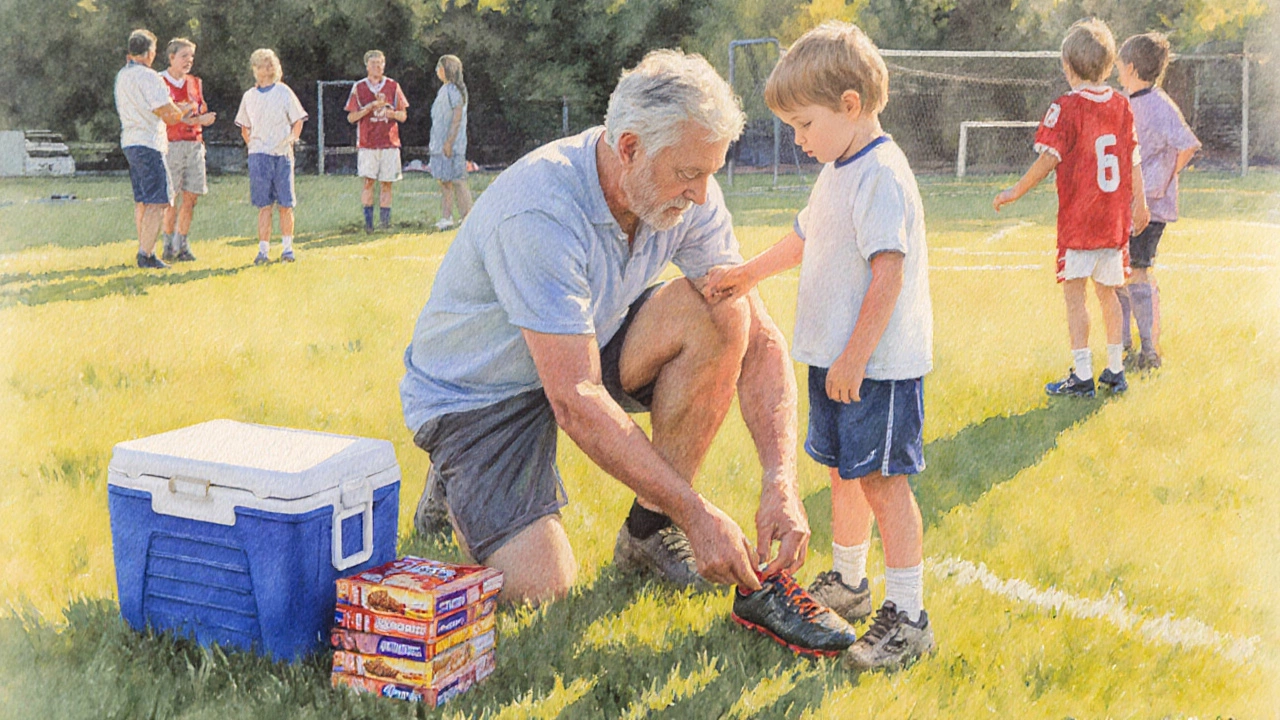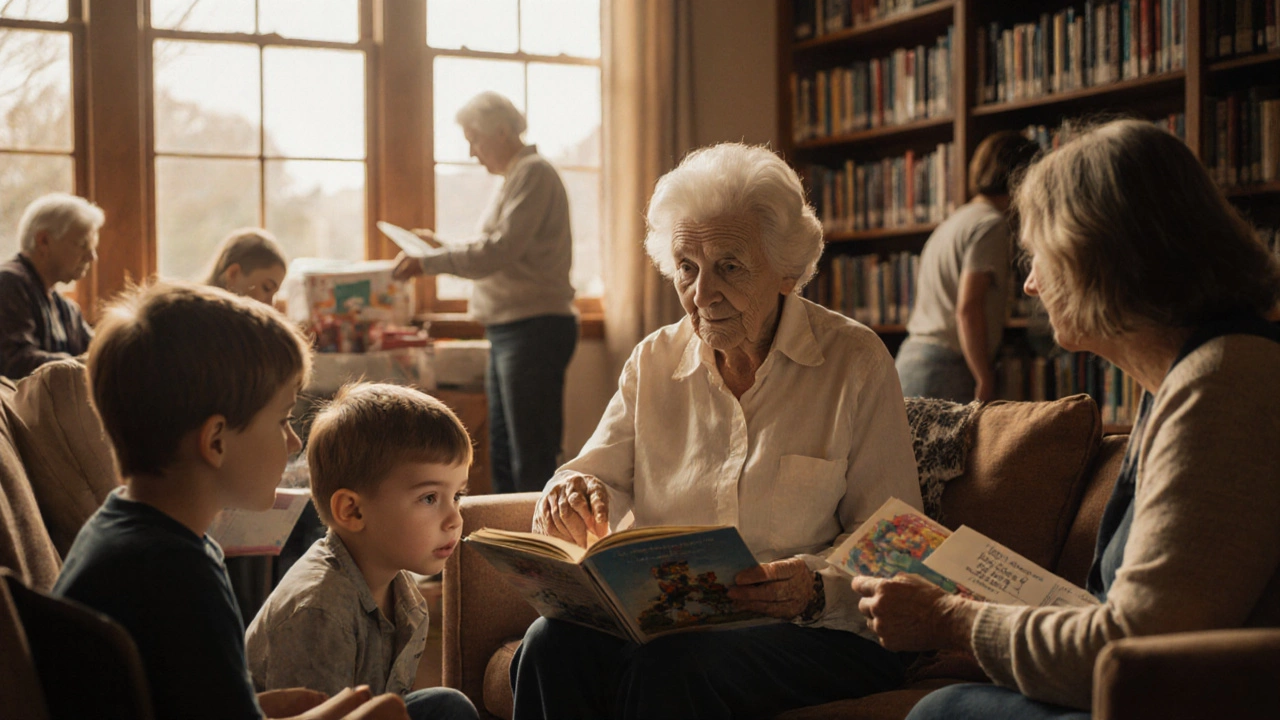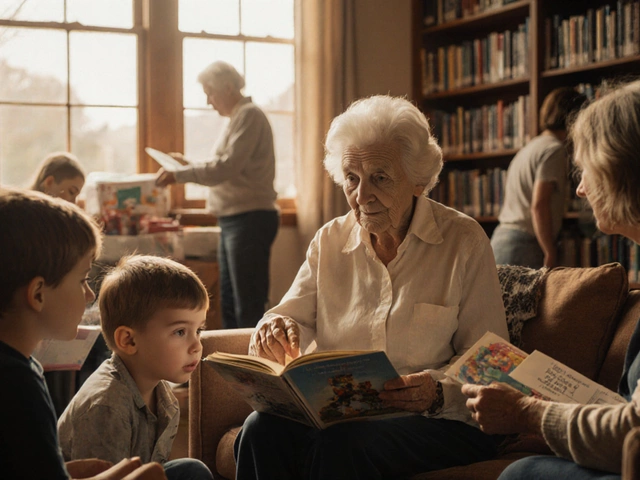Volunteer Impact Calculator
How Your Volunteer Time Compares
Calculate your annual volunteer impact based on the article's data about age-specific volunteering patterns.
When you think of volunteers, who comes to mind? The retired teacher tutoring kids after school? The college student handing out meals at a shelter? Or maybe the busy parent organizing a neighborhood clean-up on weekends? The truth is, volunteering isn’t just one type of person. But if you want to know who shows up the most - who gives the most hours, the most consistent time, the most reliable hands - the answer isn’t what you might expect.
People Over 60 Volunteer More Than Any Other Group
In New Zealand, the United States, Canada, and the UK, adults aged 60 and older consistently volunteer at the highest rates. According to data from Statistics New Zealand and the Corporation for National and Community Service, nearly 30% of people aged 65-74 volunteer regularly, compared to just 18% of those aged 25-34. That’s nearly a 60% higher rate.
Why? It’s not just free time. While retirement does open up hours in the day, the real driver is deeper. People in this age group often have decades of skills, networks, and a strong sense of legacy. They’ve raised families, built careers, and now want to give back in ways that matter. Many volunteer at libraries, food banks, hospices, and youth mentoring programs - places where experience counts as much as energy.
In Wellington, for example, the Volunteer Wellington network reports that over 40% of their active volunteers are over 60. They run the city’s community transport service, read to seniors with dementia, and help maintain public gardens. These aren’t one-off events. These are weekly commitments, often for five or more years straight.
Teens and Young Adults Volunteer Too - But Differently
If you’re under 25, you might be surprised to hear you’re not the most active group. But that doesn’t mean you’re not volunteering. You just do it differently.
Teenagers often volunteer as part of school requirements. High schools in Auckland and Christchurch push community service hours, and many students complete them during school breaks or through organized trips. But once they leave school, participation drops sharply. Only about 15% of 18-24-year-olds volunteer regularly, and many of those are still in university.
Young adults who do volunteer tend to focus on causes tied to identity or passion - climate action, animal rights, LGBTQ+ support. Their time is fragmented. They might join a one-day beach clean-up, help at a music festival fundraiser, or run a social media campaign. It’s high-impact, short-term, and often digital-first. They’re not less generous - they’re just not signing up for weekly shifts at the soup kitchen.
Parents in Their 30s and 40s: The Hidden Volunteer Base
Here’s a group you rarely hear about: parents with kids under 12. They’re not on the front pages of volunteer reports, but they’re the backbone of school events, PTA meetings, scout troops, and local sports clubs.
In New Zealand, over 25% of parents in this age group volunteer through their children’s schools or community centers. They coach soccer, bake for fairs, drive kids to practices, and organize book drives. These aren’t always counted in national surveys because they’re informal, unpaid, and tied to family life. But they’re real, consistent, and essential.
What’s missing? Recognition. These volunteers rarely get thanked in press releases. They don’t show up on charity leaderboards. But without them, after-school programs collapse. Local sports teams shut down. Community events vanish.

Why Age Matters More Than You Think
Volunteering isn’t just about how many people show up - it’s about how long they stay. People over 60 don’t just volunteer more often; they volunteer for longer. The average volunteer tenure for those over 65 is 7.2 years. For those aged 18-24, it’s less than 1.5 years.
This isn’t just about loyalty. It’s about stability. A senior who’s been reading to kids at the library for a decade builds trust. Kids come to expect them. Staff rely on them. Programs can plan ahead. When that person stops, the gap is hard to fill.
Younger volunteers bring energy, fresh ideas, and digital skills. But they often move on - for jobs, relationships, or relocation. That’s okay. But organizations that depend on long-term volunteers can’t survive on short-term bursts alone.
What This Means for Volunteer Organizations
If you run a nonprofit or community group, here’s what the data tells you: don’t assume young people will fill the gap left by aging volunteers. They won’t - not in the same way.
Instead, design roles that match the strengths of each group:
- For seniors: offer roles that value experience - mentoring, training, advisory boards, storytelling, and long-term project leadership.
- For young adults: create one-time events, micro-volunteering (1-2 hour tasks), digital campaigns, and social media support.
- For parents: build flexible, family-friendly roles - weekend events, drop-in help, and tasks you can do while your kid is in the next room.
One organization in Dunedin saw a 60% increase in volunteer retention after they stopped asking everyone to do the same thing. They stopped treating volunteering like a one-size-fits-all job. They started matching people to roles that fit their life stage.

The Myth of the ‘Ideal Volunteer’
Too many groups still picture the ideal volunteer as a retiree in a bright vest, smiling while sorting cans. That’s one kind of volunteer - and a vital one. But it’s not the only kind.
Volunteering today is diverse. It’s a 16-year-old starting a TikTok campaign to raise money for mental health apps. It’s a 72-year-old teaching coding to refugee teens. It’s a mom who brings homemade cookies to the shelter every Thursday.
Trying to force everyone into the same mold doesn’t grow your volunteer base. It shrinks it. The real win isn’t in finding the most volunteers - it’s in creating space for all kinds of volunteers to show up in their own way.
How to Get Involved - No Matter Your Age
Still wondering where you fit? Here’s how to find your place:
- Under 18: Ask your school about service clubs or check out Youth Volunteer Network NZ. Look for events tied to causes you care about - animals, climate, arts.
- 18-30: Try platforms like VolunteerMatch or DoSomething.org for short-term gigs. You don’t need to commit for years. One day can make a difference.
- 30-50: Look for family volunteering days. Many organizations offer events on weekends where kids can come too. Your time matters - even if it’s just two hours a month.
- Over 50: Your experience is your superpower. Reach out to local libraries, hospices, or senior centers. You don’t need to be ‘active’ to be valuable. Just show up.
Volunteering isn’t about age. It’s about connection. And every age group connects differently. The question isn’t ‘who volunteers the most?’ It’s ‘how can we make room for everyone to give in their own way?’


